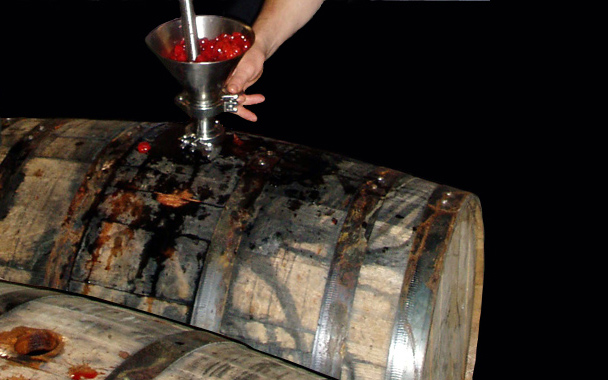Vinnie Cilurzo, the brains behind Russian River Brewing Company in Santa Rosa, California, fashions the maniacally hoppy Pliny the Elder and Pliny the Younger, the gold standards for double and triple India pale ales. But they’re as conventional as Coors when compared to Cilurzo’s pet creations, which are so dangerous they’re brewed in isolation behind closed doors.
“I like making beers with bugs and critters,” says Cilurzo of his sour, Belgian-style ales fermented with Brettanomyces, a particularly potent type of yeast that he has experimented with since 1999.
Brettanomyces (often informally called “Brett”) imbues beers, such as barrel-aged Belgian lambics, with mild sourness and an earthy, barnyard funkiness (often considered defects in wine) that’s as foreign as your first bite of gamy goat or stinky durian. “We’re making creative beers with lots of personality,” Cilurzo says. His innovations include the woody Temptation, made by adding Brett (in addition to Lactobacillus and Pediococcus bacteria) to the raw wort and aging in oak Chardonnay barrels; and the sour-cherry Supplication, made by adding Brett and aging in Pinot Noir barrels. For the tart, 100 percent spontaneously fermented Beatification, Cilurzo doesn’t add yeast at all—it is simply floating in the air (the result of brewing Brett beers for a number of years in close quarters), and it colonizes the wort on its own.
Unlike normal beers, which ferment predictably with the addition of brewers’ yeast and can be drinkable in as few as two or three weeks, Brett beers “aren’t even tasted until they’re six months old,” Cilurzo says, adding that they are often aged for more than a year. “The beers tell us when they’re ready, and they work at their own pace. You can’t think like a brewer; you have to think like a winemaker.”
This challenge has attracted brewers at Allagash, New Belgium, and Jolly Pumpkin, which exclusively manufactures unfiltered, barrel-cured wild-yeast beers. Still, these sour ales remain a niche within the microbrew niche for several important reasons. “The wooden barrels require tons of space, and there’s a huge risk involved if the wild yeasts infiltrated other beers,” Cilurzo says.
“If Brett got into our regular production beer while it’s fermenting, it could be devastating,” says Gary Fish, owner of Deschutes Brewery in Bend, Oregon, explaining that the invasive spores would impart unwanted sour flavors. So “we were absolutely fastidious with our cleaning process” when creating a sour brown ale that’s aging in barrels containing mashed cherries (the beer, which will be called The Dissident, is tentatively scheduled for a September release).
Cilurzo takes safety one step farther by embracing kosher-style cleanliness methods: duplicates of every brewing gasket and tube—one for Bretts, one for normal beers. A costly headache? Not to Cilurzo. His complex beers have proven so popular that he’s ramping up production sixfold at his new brewery, slated to open this spring, with more than 400 oak barrels for aging.
“We make funky, challenging beers we like to drink,” Cilurzo explains, “and thank God, there are people out there who like them.”




 Pinterest
Pinterest


